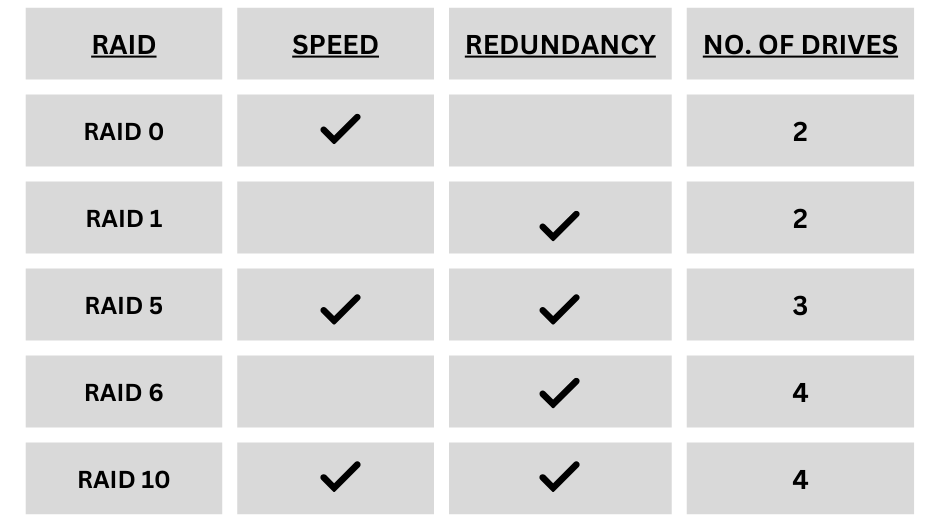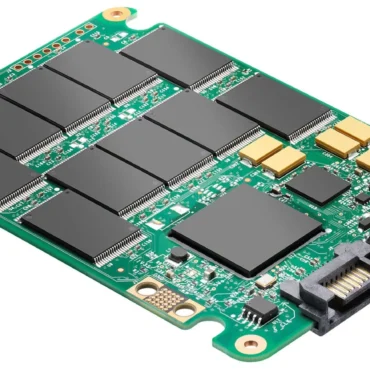In this data-driven age, the importance of reliable and efficient data storage cannot be overstated. As both businesses and individuals generate and store large amounts of data, the need for strong storage solutions has become necessary. RAID (Redundant Array of Independent Disks) is a technology that has revolutionized the way we approach data storage, offering a perfect balance between data security and performance.
What is RAID?
RAID is a method of combining multiple physical disk drives into a single logical unit, providing enhanced data redundancy, improved performance, or a combination of both. By spreading data across multiple disks, RAID systems can protect against data loss in the event of a disk failure while simultaneously improving read and write speeds.
The Origins of RAID
The concept of RAID was introduced in the late 1980s by researchers at the University of California, Berkeley. Their groundbreaking work, known as the “Berkeley Papers,” laid the foundation for modern RAID implementations. The researchers recognized the growing demand for reliable and high-performance data storage systems. They proposed various RAID levels, each offering specific advantages and disadvantages.
RAID Levels
RAID systems are typically categorized into different levels, each designed to cater to specific needs and requirements. Here’s a brief overview of some of the most common RAID levels:
- RAID 0 (Striping)- It is a non redundant system, it improves performance by striping the data across multiple disks. It has no tolerance so data recovery is impossible.
- RAID 1 (Mirroring)- It creates the exact copy of the data on two or more different drives. It provides excellent data redundancy and protection but reduced storage capacity.
- RAID 5 (Distributed parity)- It stripes the data across three or more drives using one drive to store parity information. This level offers tolerance for a single disk failure. It provides good read and write performance.
- RAID 6 (Double distributed parity)- It is similar to RAID 5 but uses two parity disks. This provides increased fault tolerance but reduced read and write performance.
- RAID 10 (Mirrored striping)- It is the combination of RAID 0 and 1. It creates a striped set from a mirrored set of disks. This offers both fault tolerance and high performance.
Benefits of RAID-
RAID systems are very useful for both personal and business use because of their many advantages:
- Data Redundancy: RAID provides data redundancy by maintaining multiple copies or parity information, protecting against data loss in the event of disk failures.
- Improved Performance: Certain RAID levels, such as RAID 0 and RAID 10, can significantly improve read and write speeds by striping data across multiple disks.
- Increased Storage Capacity: RAID systems can combine multiple smaller disks into a single larger logical unit, effectively increasing the overall storage capacity.
- Hot Swapping: Many RAID implementations support hot swapping, allowing failed disks to be replaced without shutting down the system, minimizing downtime.
- Flexibility: RAID offers various configurations to cater to different performance, capacity, and fault tolerance requirements, making it suitable for a wide range of applications.
Real-World Applications
RAID systems are widely used in many different sectors and industrial cases, such as:
- Enterprise Data Centers: Large organizations rely on RAID arrays to store and protect mission-critical data, ensuring high availability and reliable backups.
- Media and Entertainment: The media and entertainment industry, with its massive file sizes and demanding performance requirements, benefits greatly from the speed and redundancy offered by RAID solutions.
- Video Surveillance: RAID systems are often employed in video surveillance setups, where continuous recording and data integrity are paramount.
- High-Performance Computing (HPC): In HPC environments, RAID arrays are used to store and process large datasets, taking advantage of the increased throughput and fault tolerance.
- Personal Storage: Even home users can benefit from RAID configurations, protecting valuable data such as family photos, videos, and documents against disk failures.
Choosing the Right RAID Level
Selecting the appropriate RAID level is crucial to ensure optimal performance and data protection. Factors to consider include the desired level of fault tolerance, read/write performance requirements, storage capacity needs, and cost considerations. For example, RAID 1 or RAID 10 might be suitable for applications prioritizing data redundancy and high performance. RAID 5 or RAID 6 could be a more cost-effective choice for large storage arrays with moderate performance needs.
Implementing RAID
RAID can be implemented in both hardware and software configurations. Hardware RAID solutions typically involve dedicated RAID controllers or specialized storage appliances, offering better performance and reliability but at a higher cost. Software RAID, on the other hand, is implemented through the operating system or third-party software, providing a more cost-effective option but potentially sacrificing some performance.
Conclusion
RAID storage systems have become an indispensable part of modern data storage solutions, offering a powerful combination of data security, performance, and flexibility. Whether you’re a business managing critical data or an individual seeking to safeguard cherished memories, it provides a reliable and efficient way to protect your valuable information. As technology continues to advance, RAID will undoubtedly evolve, but its core principles of redundancy and performance will remain essential in the ever-growing world of data storage.






Post comments (0)